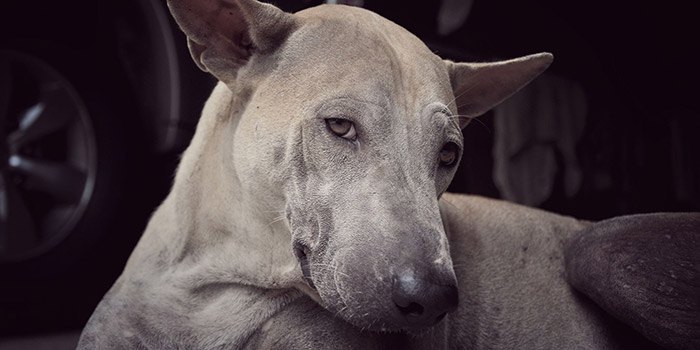

It is not unusual for animals to develop a lump here or a bump there, especially as they get older. So when is a growth something you need to worry about, and when is it something to just keep an eye on? Pets in Stitches wants you to know which bumps in pets are bad, which are benign, and what to do if you find one.
All Types of Bumps
Most lumps and bumps are not any big deal, but it is important for pet owners to recognize when they are present. All bumps in pets warrant close observation. There are a few different things that might cause a lump or bump on your precious animal. These include:
- Infection – When an abnormal infectious agent, such as a bacterium, invades the body, the typical reaction is to swell. The body will also bring in infection fighting cells such as white blood cells to try and eliminate the problem. This can result in a large, pus filled swelling (an abscess such as that caused by a puncture wound) or a small, pimple like lump (a pustule such as those commonly seen with surface skin infections).
- Reaction – When something foreign, such as a piece of plant material or an allergy-inciting agent enters the body, a swelling called a granuloma may form. This is the body’s way of walling off the offending object and attempting to get rid of it.
- Cancer – Neoplastic, or abnormally dividing, cells are common in our pet population. Not all neoplastic cells are bad news, though. In fact many swellings such as lipomas (fatty tumors), papillomas (warty growths), and sebaceous adenomas (oil gland tumors) are benign. Of course malignant tumors also occur. These tense to be aggressive and invasive and are often most successfully treated early in their course.
It can be difficult to tell for sure why a mass is present without further diagnostic tests. This is why it is so important to be sure to alert your vet to any lumps or bumps as soon as possible.
When to Worry About Bumps in Pets
Not every swelling requires an emergency visit to the vet, however. So when is a pet parent to worry? In general, it is important to have masses in pets examined right away if:
- A bump appears very suddenly
- The area seems uncomfortable to the pet
- The growth is growing or changing quickly
- The area is red or irritated
- Your pet has a history of cancer
- You have a short-haired dog (Boxer, Pug, Pit Bull, etc.) that is at higher risk for malignant tumors
- The growth is in an irritating area such as on the margin of an eyelid
If the bump doesn’t meet these criteria, it is likely fine to wait until your pet’s next wellness appointment to have it checked out. It is never wrong, though, to have things looked at if you are unsure.
When you bring your pet in for an examination of a lump or bump, many times a test called a fine needle aspirate will be recommended. During this procedure a small sample of cells is obtained from the area using a needle. These cells are examined under the microscope and can reveal clues about what type of growth you might be dealing with and if there are indications that it may be cancerous.
If the area is worrisome, a biopsy may also be performed. A pathologist can give more information about what the growth is, if further treatment is warranted, if it is likely to come back, and what the pet’s overall prognosis might be.
Masses in pets can be caused by many things. No need to panic if you find one on your furry friend. Be sure to get them checked out in a timely fashion and don’t delay if things seem awry. Fast action is often the best way to be sure your pet stays healthy. At Pets In Stitches, we are experienced in mass removals and will walk you through the process if our team finds a worrisome growth that should be removed from your pet.
